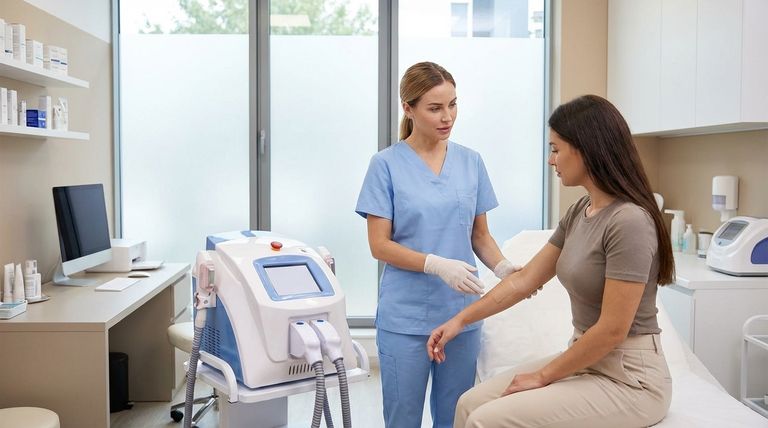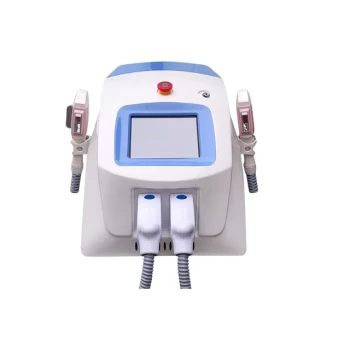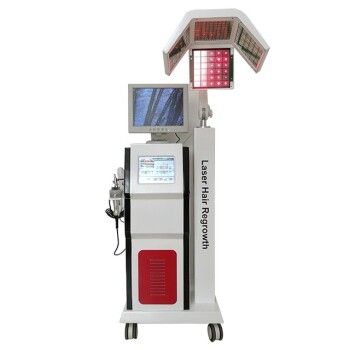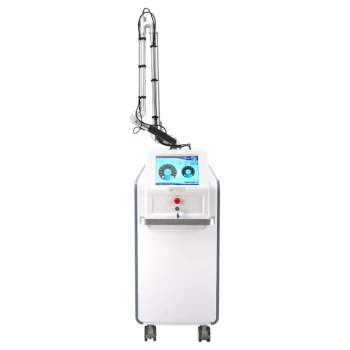Yes, at-home IPL machines are generally considered safe when used exactly as directed by the manufacturer. Their safety, however, is not universal and depends critically on your specific skin tone and hair color. Misuse or using a device on an incompatible skin type can lead to adverse effects, including skin damage.
The safety of an IPL device is not an inherent feature of the machine itself, but a direct result of correct usage. True safety comes from confirming your skin and hair are compatible with the technology and adhering strictly to the operational guidelines.

How IPL Works and Why It Affects Safety
The Principle of Light Absorption
Intense Pulsed Light (IPL) devices work by emitting a broad spectrum of light. This light energy is absorbed by pigment, or melanin, within the hair follicle.
This absorption converts light into heat, which damages the follicle and inhibits its ability to grow new hair.
Melanin: The Target and the Risk
The key to safe and effective IPL is contrast. The technology relies on the light being absorbed by the dark melanin in the hair, while the surrounding skin, having less melanin, remains unaffected.
This is why the biggest safety risk involves skin tone. If the skin is rich in melanin (i.e., darker skin), it can also absorb the light energy, potentially leading to burns or pigmentation issues.
The Hair Growth Cycle
IPL is only effective on hairs in their active growth phase (the anagen phase). Since only a fraction of your hairs are in this phase at any given time, multiple sessions are required to treat all follicles as they cycle through.
This is not a direct safety issue, but understanding it prevents overuse from trying to get faster results, which can irritate the skin.
The Critical Factor: Skin and Hair Compatibility
The Ideal Candidate: Light Skin, Dark Hair
IPL works best when there is a high contrast between skin and hair color. Individuals with fair to light-brown skin and dark brown or black hair will see the most effective and safest results.
The Danger for Darker Skin Tones
For individuals with dark brown to black skin, at-home IPL devices are not considered safe. The high concentration of melanin in the skin will absorb too much light energy.
This can lead to pain, blistering, burns, and permanent changes in skin color, such as hyperpigmentation (dark spots) or hypopigmentation (light spots).
Ineffectiveness on Light Hair
Conversely, IPL is ineffective on very light blonde, red, or grey hair. These hair colors lack sufficient melanin to absorb the light, meaning the treatment will not produce results.
Understanding the Risks and Side Effects
Common, Mild Side Effects
It is normal to experience some mild redness, a slight warming or snapping sensation, and minor swelling in the treated area. These effects are temporary and typically subside within a few hours.
More Serious, but Avoidable, Risks
Burns, blisters, and even scarring are potential risks of IPL. However, these are almost always the result of user error.
This includes using the device on an incompatible (dark) skin tone, setting the intensity level too high for your skin, or treating the same spot multiple times in one session.
Changes in Skin Pigmentation
The most common serious side effect is a change in skin color. This is a significant risk for those who use IPL on tanned skin or on naturally dark skin tones, as the light energy can damage the skin's pigment-producing cells.
Eye Safety
Never use an IPL device on the face above the cheekbones, especially around the eyes. The intense flash can cause serious eye damage. Most devices have a safety sensor that prevents them from flashing unless fully pressed against the skin, but this precaution is paramount.
How to Ensure Safe and Effective Use
Always Perform a Patch Test
Before your first full treatment, test the device on a small, inconspicuous area of skin. Wait at least 48 hours to ensure you have no adverse reaction.
Start with the Lowest Energy Level
Begin with the lowest intensity setting. If your skin tolerates it well, you can gradually increase the level in subsequent sessions, but never to a point that causes pain.
Prepare Your Skin Correctly
The treatment area should be clean, dry, and recently shaved. Do not wax, epilate, or pluck, as the hair root needs to be present for the IPL to work.
Avoid Sun Exposure
Tanned skin is more susceptible to side effects. Avoid sunbathing, tanning beds, and self-tanning products for at least two weeks before and after your treatment.
Making the Right Choice for Your Situation
To determine if IPL is right for you, consider your primary goal and physical characteristics.
- If you have fair to medium skin and dark hair: IPL is likely a safe and effective hair removal option for you, provided you follow all instructions and perform a patch test.
- If you have dark or very dark skin: At-home IPL devices carry a significant risk of burns and pigmentation changes and should be avoided in favor of other hair removal methods.
- If you have very light blonde, red, or grey hair: IPL will be ineffective as there isn't enough pigment in the hair for the light to target, so you should not expect to see results.
Ultimately, the safety of an IPL device is determined not by the machine itself, but by your informed and disciplined use of it.
Summary Table:
| Skin Tone & Hair Color | Safety & Effectiveness | Key Considerations |
|---|---|---|
| Light Skin, Dark Hair | Safest & Most Effective | High contrast allows precise targeting of hair follicles. Follow all instructions. |
| Dark Skin Tones | Not Safe | High risk of burns, blisters, and permanent pigmentation changes. Avoid at-home use. |
| Light Hair (Blonde, Red, Grey) | Ineffective | Lack of melanin prevents the IPL light from targeting the hair follicle. |
Ensure Professional and Safe Results with BELIS
While at-home IPL devices require careful self-assessment, medical aesthetic clinics and premium beauty salons rely on professional-grade technology for guaranteed safety and efficacy. BELIS specializes in professional medical aesthetic equipment, designed for experts who prioritize client safety and outstanding results.
Our advanced IPL systems feature precise skin tone sensors and customizable settings that surpass at-home capabilities, allowing professionals to safely treat a wider range of skin types with confidence.
Ready to offer your clients the highest standard of care?
Contact BELIS today to explore our range of professional IPL machines and elevate your treatment offerings.
Visual Guide

Related Products
- IPL SHR Hair Removal Machine for Permanent Hair Removal
- Clinic Use IPL and SHR Hair Removal Machine with Nd Yag Laser Tattoo Removal
- Multifunctional Laser Hair Growth Machine Device for Hair Growth
- IPL SHR+Radio frecuency machine
- Multifunctional Laser Hair Growth Machine Device for Hair Growth
People Also Ask
- What are the negative effects of IPL? Understanding Risks for Safe Treatment
- Does IPL work on all skin types? The critical role of the Fitzpatrick scale in safety and results
- How quickly do you see IPL results? A Realistic Timeline for Clearer Skin
- Does IPL hair removal actually work? Achieve Long-Term Hair Reduction
- What should I look for in an IPL machine? Key Features for Effective Hair Removal



















